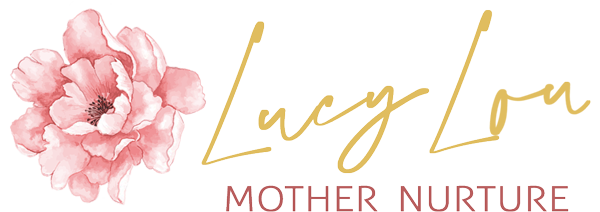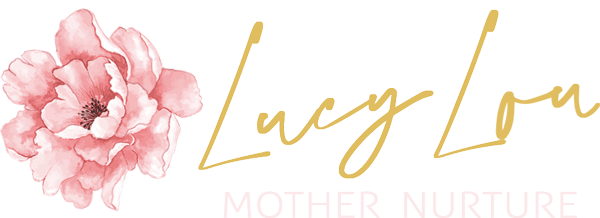At no point have I ever called myself a staunch breastfeeding advocate.
When I was pregnant, I guess I just assumed that I WOULD breastfeed. A generally positive outlook on life (and the fact I was a little clueless) meant I never entertained the thought that breastfeeding would be difficult.
I was in for a rude awakening.
My early breastfeeding days would set the stage for the perfect pageantry of cracked nipples, engorged breasts, infected milk ducts and a baby who would slip off my breast just when I thought I’d mastered her latch.
I became anxious as the sun went down and wondered what the small hours had in store for me. And when the next feed did eventually arrive, my nipples would wail as my baby would once again, make her clamp.
I did eventually come through it. With a bit of help and some renewed grit, I came out wiser and with nipples made of steel (I kid you not).
I think I felt I’d been through so much that I wasn’t going to be beaten by it. Some might say it came down to being stubborn, but either way, I was afforded the staying-power to continue breastfeeding for a further 13 months.
For some, breastfeeding evokes blissful intimacy and a pride in the ability to give perfect nourishment. For others, just waiting for the next feed brings genuine anxiety..
Whilst we are well aware of its vast natural benefits, for many, breastfeeding doesn’t come very intuitively at all.
As I moved into my years of being a doula, I would see many breastfeeding mums and witness an assortment of feeding difficulties. I came to understand the joy of breastfeeding but also what many simply endured.
Here are six perfectly understandable reasons why women turn to the bottle… (of formula)
1. It’s freakin’ painful
If you’re afflicted with agony every time you attach your baby, something needs fixing or why would you bother?
Typically due to awkward positioning and compounded by baby as she ‘slurps’ your nipple into her mouth - her shallow-latch will be a sure-fire way to turn mum off the process entirely.
Helpful hints:
Make sure you bring baby to your breast and keep her body firmly across yours as you feed. Wait for a well-opened mouth before she meets your breast and position the nipple pointing toward the roof of baby’s mouth. Her chin will be touching your breast and her nose might be too.
2. Mastitis and blocked milk ducts
Mastitis is an inflammation of the breast and is caused by milk ducts that become blocked.
In addition, milk can build up behind the blockage and a tender lump develops - hello blocked ducts! Sometimes a white spot can develop over the nipple - a sign that skin has started growing over the opening of the duct
Mothers experiencing mastitis develop flu-like symptoms and feel super unwell. The site at which the milk accumulates causes great pain, tenderness, swelling and infection.
There is nothing fun about Mastitis or blocked milk ducts, and if it’s recurring, can crush the best woman’s dogged determination to breastfeed.
Helpful hints:
Apply warmth to affected breast and gently massage the area, down toward the nipple. Use a little olive oil to assist. Ensure bub feeds frequently and well from the affected breast and drain the breast entirely. Trying some different feeding positions might help too.
NB. This is NOT the time to wean your baby! After the feed, pop a cold pack on the affected area.
If the blockage persists and you are not feeling better within 8-12 hours, don’t hesitate to see your doctor as antibiotics may be required. You’re going to be ok, mum.
3. Inverted nipples
Inverted nipples don’t protrude from the areola and are sometimes stuck inwards toward the breast. Some can be drawn out with suction ie whilst your baby feeds or whilst using a breast pump.
Helpful hints:
Believe it or not, it is very possible to feed well with inverted nipples!
If your breasts are full or engorged, baby may find it most difficult to latch. Try expressing by- hand for a minute or so, until your breasts are a little less full, this will give the nipple a little more space to be suctioned out and for baby to attach.
You might find using a nipple shield for the beginning of your feed helpful. This will give time for baby to take away the fullness of the breast. Try removing the shield after a few minutes and continue with the rest of the feed. I know you want to ditch it, but you’ve so got this!
4. Baby bites
This one’s a no-brainer if baby is a biter... why would you put your nipples anywhere near her?
If your baby has newly-erupted teeth, she may ‘rest’ these against your areola. Not quite the snuggly surprise you were hoping for?
Some babies clamp down if the milk doesn’t come quickly enough, if they’ve had enough or if they feel they don’t have mum’s full attention. Cheeky squirt 😊
Helpful hints:
Try rubbing her gums before a feed, this may relieve any discomfort.
If baby bites, say firmly ‘No’, release her suction with your pinky finger and remove her from the breast for a few minutes. Avoid the 4-lettered expletives or you might frighten her, or worse yet, entertain her enough to make her want to take another shot.
5. Engorgement
I remember stepping out of our ensuite shower, a few days after birth, breasts fuller and firmer than ever. Feeling more like a swollen Sasquatch than a voluptuous centre-fold, I was in A LOT of pain. I was later to learn this was not normal and that my breasts were severely engorged.
Engorgement is caused primarily by a build-up of milk and blood in the breast tissue. Your breasts feel uncomfortable, warm and very heavy. In some cases, a mum’s breasts can become so engorged (swollen, hard and tender), that her nipples become flattened out and breastfeeding can be very painful as baby struggles to attach at all.
Handy hints:
Don’t give up ladies! Take your bra completely off before starting a feed and express a little milk before baby attaches. Give her frequent feeds and as she feeds, let the other breast drip. Again, gentle breast massage and use of warmth are helpful for the let-down reflex. Apply a cold pack after each feed to reduce inflammation.
6. Low milk supply
Most mums at some point worry about their milk supply but the truth is most mums produce more than enough for their babies. Milk supply is only considered ‘low’ when there’s not enough to satisfy your bub’s growth.
Helpful hint:
The key to increasing breastmilk supply is about feeding that babe - she will generally be more than happy to oblige 😊
It’s always beneficial to seek advice from an appropriate maternal healthcare professional. There are loads around. Look for Lactation Consultants, public health nurses, midwives and doctors…
It’s super easy to understand why so many mums give breastfeeding the flick, but if breastfeeding is something that you want and aspire to do, hang in there and get the help you need.



